Improving Air Quality in Homes and Buildings
Every TruTeam branch has expertise in local building science for their region. These experts know how our unique installation solutions contribute to increased energy efficiency and a properly sealed building envelope. By sealing the building envelope and installing proper insulation, not only can you control the temperature regulation of a building, but the air quality can be preserved. In addition, having a continuous and fresh air supply helps to improve the air quality and overall comfort. Here are some things you should know about improving air quality for residential and commercial buildings.
Air Flow and Home Design
Architects often consider the aesthetic flow of a home when they design. The structure of the home can also affect the flow of heat and air. Smart choices can lead to lower energy bills and a very comfortable home. The design of a comfortable home has long depended on air flow. In cold climates where heat came from fireplaces, homes were designed with many rooms that could be closed off so that the heat could stay in the main living areas. In warm climates like Hawaii, homes have multiple doors that open on all sides to allow a cross-breeze to naturally keep things cool. As upgrades have been made in insulation and central heating/cooling, open floor plans have become more feasible without compromising air flow.
Optimizing Air Flow
When constructing a home, there are a number of things that you can accomplish. If you want to naturally warm a home, consider a row of windows and/or skylights on the south side of the home. This can create a greenhouse effect and help to lower energy costs. If you are building a home in a place with very hot summers and very cold winters, then you can dissipate that same heat if the windows open to create cross-breezes. Fans can help to even temperatures within a home if hot air is trapped at the top of the home. Multi-story homes will have a harder time controlling heat on each level, though fans along stairwells and in high-ceiling sections can help.
Regional Environmental Considerations
When homes have a mold issue, the reason is often due to a lack of air flow. This often occurs in the southeast, where you have high-volume ceilings at 12 feet and passageways (doors, arched openings, etc.) at 8 feet. Hot air gets trapped in these upside-down pools with zero air flow. That raises the humidity to above 70 percent. In southwest Florida, for example, the considerations are slightly different in the fact that insulation must be perforated to allow the system to properly remove moisture from the home. This is also why cycle times for an AC air exchange rate are also important. An AC that runs for the ideal amount of time and cycles off and on at consistent intervals is important to prevent mold in moist climates.
Air Flow Disrupters
A home that is not well-sealed will have a number of cold breezes that come from unwanted places. Poorly sealed windows, gaps in construction and uninsulated foundations are all causes for cold (or hot) air to seep in, as well as moisture. Good caulking and insulation are essential to avoid this.
Moisture in a Home
A well-sealed home has a more difficult time getting rid of moisture. This is why vents and windows are essential. Cooking and bathing are a constant source of moisture in the home, and they need a place to escape. In addition to vents, a kitchen hood can also help to vent water outside. Otherwise, keeping a home warm enough and with enough air flow to avoid condensation is important. You do not want water to settle as it can lead to mildew.
Building Structure and Air Flow
What we are normally concerned about is ACHnat, which stands for Air Changes per Hour that “naturally” happen in a house. A lot of the numbers you will see are based upon the house under a set pressure. Those can be used to come up with the ACHnat number. For a normal batt and blow house, ACHnat is usually around .5. That means that every hour, half the volume of the air in the house leaks out to be replaced by air from the outside, like from the garage and attic. This air will have a lot of humidity and particles in it – whether pollen, dirt, heat (attic) or CO from the garage. The air handler now needs to try to dehumidify, cool and clean that air as it pulls from the returns.
So .5 ACHnat means that 12 times the volume of your house in leakage has to be treated each day on top of the heat that is making its way into your house from radiant and conduction heating. Think of the difference in the volume of moisture and contaminates between a batt house at 12 x the volume vs. 2.4 with foam each day. The air conditioner in the batt house has to work at least 4 times as hard. Some people always ask about the fresh air vents we put in houses in which we install spray foam insulation, and how that is different than air leakage. The big differences are: 1) we pick where the air comes from – soffit vs. attic or garage 2) that air is introduced into the return before the coils and is filtered and conditioned before it enters the house and 3) having a fresh air intake helps to put a positive pressure on the house, which keeps pollen, dirt, and hot air from leaking past doors and windows.
Avoid Contaminating Your Indoor Air
The quality of the air in your home can have a big impact on your health. Poor air quality can set off allergies and sinus problems. It’s especially problematic for people with respiratory illnesses such as asthma. There are several steps you can take to ensure that your indoor air quality is good. Sometimes homeowners are directly responsible for polluting their own indoor air. One of the worst culprits is smoking, which makes the air toxic. If there are any smokers in your household, make sure they go outdoors to indulge. There are also other, less obvious sources of indoor air pollution. These include air freshners that contain harsh chemicals, scented candles, incense and smoke from woodburning stoves. Being aware of what you burn and spray in your home is the first step towards developing healthier habits.
Keep Your House Clean
One of the simplest ways to maintain good air quality is to thoroughly clean your home on a regular basis. Dusting and mopping help control dust, which contains dust mites and allergens. If you have carpets, it’s helpful to use a quality vacuum, preferably one with an HEPA filter. This removes dust and debris that ordinary vacuums miss. If you have pets, be sure to manage the accumulation of cat or dog hairs, which contribute to poor air quality.
Control Humidity
A high level of humidity contributes to problems such as mold and the proliferation of dust mites. Air conditioning and dehumidifiers help to reduce humidity. It’s also helpful to keep air circulating in your home, especially when you’re cooking. Keeping windows open and using fans are useful for this purpose. As a general rule. try to maintain humidity levels at below 50 percent.
Change Your HVAC Filters Regularly
Old and dirty HVAC filters are among the biggest culprits when it comes to poor indoor air quality. As you heat or cool your home, air is constantly circulating. If the filters aren’t changed, debris starts to accumulate and your air quality suffers. It’s important to have these filters changed every few months.
Make Sure Your Home is Properly Insulated
Insulation also affects the quality of your indoor air. Many outdoor pollutants, such as dust, allergens, and pollution from automobiles, factories, and other sources can enter your home through unsealed spaces and cracks. Insulation not only keeps your home at a comfortable temperature, it also helps to maintain good indoor air quality.
Test Your Home’s Air Quality
It’s a good idea to test your indoor air quality. While some contaminants are obvious, some of the most deadly, such as radon, are odorless. You can buy home air quality tests or hire someone to do this for you. You can test for mold, radon, formaldehyde and other impurities that can pose a health hazard.
Know How to Keep Heat Out of Your House
By sealing off the eaves and encapsulating the attic roof deck, this allows the hot air from outside of the home to stay outside and the air conditioning to work less by staying cool in the attic space. The walls can be sprayed to close up all the exterior gaps and penetrations that were created during the building of the home and also to keep the heat from penetrating through the walls. By creating this sealed envelope, a house will be air tight, which cuts down the chances of mold growth significantly. Without air transfer from hot to cold there is less moisture, therefore less of an opportunity for mold to grow.
Ventilation Systems
During TruTeam’s initial inspection of a job site, we check for how well-ventilated the space is and what pre-installation prep work needs to be done. Ventilation is a necessary component of any home, especially with how many functions modern HVAC systems have. A good ventilation system will keep the inside environment ventilated, heated, cooled, and humidified depending on the homeowner’s preference.
How Whole-House Ventilation Helps
Whole-house ventilation systems, in particular, can affect indoor air quality on a larger scale than local ventilation systems, which may not be as advantageous for a larger living space. Whole-house ventilation systems use one or several duct systems and linked fans to get rid of stale air and supply the home with fresh air. All of the air cycled through the home is processed through filters that are designed to pick up unwanted contaminants and prevent them from cycling around. Whole-house ventilation is advantageous for larger buildings and structures because the entire system functions to keep indoor air desirable in every room of the home. Separate duct zoning systems may require special filter care, but ultimately these systems are ideal for use in larger environments, especially ones that need to be maintained at different comfort levels depending on use.
Using Local Ventilation Systems
Local ventilation systems, on the other hand, affect indoor air quality on a smaller scale. These are often limited to a single room or set spaces, which makes them much more affordable and easier to install and maintain. However, because of the smaller area affected by these installations, they are not ideal for larger environments unless they are installed in each individual room. Local ventilation systems are ideal for smaller spaces such as studio apartments, as they can provide individuals with better indoor air quality for their special needs.
Sanitize Indoor Surfaces Regularly
One of the best ways to prevent indoor air pollution is to sanitize the workplace as frequently as possible. Things such as dust, animal dander, viruses and bacteria are quick to grow in an enclosed area if it is not kept clean. Use non-toxic cleaning products to remove unwanted buildups and be sure to stay regularly when you clean, as consistency helps prevent further issues, such as mold growth. If the workplace gets too dirty too frequently, consider eliminating the sources of waste to make future cleanings easier.
Remove Chemicals and Ash Pollutants
If we’re talking about a commercial building like an office space, make sure that it is a non-smoking zone. This is critical not only in reducing fire hazards, but also reducing the presence of airborne pollutants. Ash and cigarette smoke could stain walls and upholstery, resulting in a permanent and unpleasant scent. By removing the presence of such chemicals immediately, you can save on future cleaning costs while keeping your workplace pleasantly clean.
Service your HVAC System
Your HVAC system is responsible for more than keeping your indoor temperature even. The circulation in the system focuses on providing users with a higher quality of indoor air. However, like any other machinery, your HVAC system needs to be cleaned regularly. Make sure that you replace the filters roughly once every two or three months and have the system professionally serviced at least once a year. Keeping up to date on your system can help you get more out of it as well. Filters that become too clogged can eventually harm the interior of the system itself when tiny debris particles begin to build up.
Featured Articles
Sound Attenuation
Can I add insulation to my garage?
The Team You Can Trust
Get Free Quote


Installers
